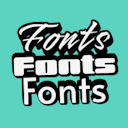Product
Templates
Resources
Company
Home
Blog
Tutorials
Writing AI Prompts: Tips & Tricks for Creatives
Writing AI Prompts: Tips & Tricks for Creatives

AI tools are becoming common companions in creative industries. Artists, print-on-demand creators, graphic designers, and marketers are using them to unlock new levels of efficiency and creativity. But, many generative AI users experience a frustrating (but common) challenge: discrepancies between what they want to generate and what’s generated. To create more accurate generative AI content, you need to learn the skill that’s growing in demand - writing AI prompts, also known as prompt engineering.
This guide will break down the four building blocks of AI prompt writing you need to know for effective prompt engineering. On top of that, will share the five common mistakes to avoid when writing an AI prompt.
By the end, you’ll know how to write better prompts to create more precise generations and leverage the full capabilities of your AI tools.
Sign up for Kittl's newsletter to receive 25% off a Kittl Pro subscription!*
Table of contents
What is a prompt in generative AI?
A “prompt” is a written or verbal request or query given to an AI tool to receive a specific response. Prompts serve as a way to communicate what you want from an AI model, whether it's a direct answer to a question, an image generation, a piece of text, or another type of content.
The information included in a prompt and its structure can vary depending on the type of content the AI is generating. With an AI image generator, for example, prompts should include descriptive language detailing the desired image elements, such as the subject, setting, colors, style, mood, and more.
Learn the lingo: The practice of writing prompts is called prompt engineering.
What are art prompts in AI?
An AI art prompt is a specific set of instructions provided to a generative AI model to create artwork. This prompt typically includes detailed descriptions of the subject, setting, style, and other relevant features that guide the AI.
What makes an AI prompt great?
We spoke with our Senior AI Product Manager, Simon Turner, and asked him what makes a great AI prompt. Here’s what he had to say:
When we think about the task of translating a vision into an image through text prompting, we consider ‘prompt adherence’ - how well the model follows the specifics of the prompt. More advanced models, such as Kittl AI Advanced Image Gen, are typically stronger in prompt adherence; this means it can handle detailed, descriptive prompts well. What makes an AI prompt great? We recommend thinking about a coherent but descriptive prompt that guides the model on all aspects of the vision you have in mind.
”Simon Turner, Senior AI Product Manager
If you ask someone for help with a task, the more precise your ask is, the more likely they’ll be able to understand what you want and accurately deliver. If you’re unclear, and don’t relay the details of what you need, then they won’t have the information they need to complete the task the way you want. The same goes for prompt writing.
Generative AI use cases include crafting images, designing logos, and drafting copy, but the quality of its output relies heavily on the quality of the input. For businesses looking to streamline operations or set up a call center, leveraging AI-powered tools ensures precision and efficiency. In other words, AI only creates as well as it's asked to, responding directly to the structure, tone, and specificity of prompts.
The model needs to make a series of predictions on how to ‘build’ the image, meaning the way the prompt is written can influence the way the image is generated.
”Simon Turner, Senior AI Product Manager
The key takeaway is that a great AI prompt relies on the structure, level of detail, and specificity of the request.
Now, let’s dive into how to build a good AI prompt!
The 4 building blocks of a good prompt
Effective AI prompts involve specific building blocks that guide the AI to create exactly what you envision. You need to intentionally incorporate these elements into your prompt. This will help you better communicate your creative ideas and produce accurate outputs.
Use the four core elements of AI prompts below as the building blocks to write great AI prompts.
Core elements of prompts
1. Set the scene
You’ll want to start with the basics, which is establishing the scene and your subject (if you have one). For example, let’s set a scene in a park and use a dog as our subject. Setting up a clear subject right from the start tells the AI what main object or scene to focus on.
If we were to immediately apply this and use “a dog in a park” as our prompt, we’ll produce generic results like the image below:

To avoid this and get an image that aligns with your vision, consider the five Ws to set the scene: who, what, where, when, and why. This will help establish a foundation that the AI can build upon. For this step, keep it simple and clear.
- Who: define who (or what) the subject is. What does the dog look like?
- What: what’s happening in the scene? What is the dog doing?
- Where: where is the location?
- When: what season is it or time of day?
- Why: this question is a bit more nuanced but consider why you’re creating the image. What is the image trying to convey?
Structure the prompt as a series of instructions, defining each element you want to see.
”Simon Turner, Senior AI Product Manager
If we apply this rule, our prompt can become: “A brown and white spotted dog running in the park on a cheerful autumn day.”
- Who: a brown and white spotted dog
- What: running
- Where: in the park
- When: on a cheerful autumn day
- Why: “cheerful” indicates the image’s mood
With this new prompt, here’s the image we can generate:

In just a few seconds, the image generator brought our AI prompt to life with every detail we asked for included in the image!
But let’s say our goal is to generate a realistic and picturesque image of a specific dog breed. To accomplish this, we’ll want to incorporate the additional details that Simon suggests: “the style, any aesthetics like lighting, quality, pose, and so on,” leading us to our second building block.
2. Add details with adjectives and descriptive language
You should consider the subject, the scene, the style, any aesthetics like lighting, quality, pose, and so on.
”Simon Turner, Senior AI Product Manager
For a unique image that aligns with your ideas, specificity is essential in AI prompt writing. Define each element you want to see, including colors, mood, and background elements as well as lighting, quality, and poses as Simon suggests in the quote above. Additionally, if you're seeking dissertation assistance, providing clear guidelines and expectations will ensure a more focused and effective outcome.
For example, adding “bright sunny day” or “dramatic evening light” to your prompt will produce drastically different results. So establishing them in your prompt will tell the AI exactly what you want.
Incorporate these descriptive elements into the basic structure you built in the step above with the five Ws. Doing this will help keep your prompt specific, clear, and concise while giving your AI tool the info it needs to understand. This will ultimately generate more accurate outputs.
The more relevant details you add, the more likely the AI will produce a unique output that aligns closely with your vision. However, balance is key - overloading with excessive details can sometimes make the prompt overly complex.
Here’s an example of an effective AI prompt that answers the five Ws with the additional descriptive elements:
“A brown and white spotted pitbull dog in the park, running across green grass towards the viewer on a crisp, autumn day. Cheerful, blue skies, with some birds flying in the distance, orange, autumnal trees are scattered around the park, old town city buildings are behind the trees at the horizon line.”
The five W's of this AI prompt - who, what, where, when, and why - break down as follows:
- Who: The main subject is the "brown and white spotted pitbull dog."
- What: The action is the dog "running across green grass toward the viewer."
- Where: The setting is "in the park" with additional details like "orange, autumnal trees" and "old town city buildings" visible along the horizon.
- When: The season is "a crisp, autumn day," suggesting a specific time of year.
- Why: The prompt suggests a cheerful scene to create a warm, engaging, and visually appealing image that could resonate emotionally with viewers.
With this updated prompt, we’ve clearly described multiple aspects of the image, addressing each of the five Ws.
Kittl Tip: When building your prompt, include descriptive imagery and adjectives in each of the five Ws. For example, don’t set your “where” to be something as simple as “in the park.” Expand on your ideal setting, using descriptive words such as “orange, autumnal trees” and "old town city buildings at the horizon line.”
See the outcome below:

3. Define the output style and formats
If you’re looking for a specific type of media, specifying this in the prompt can help guide the AI. For instance, ask for a “vector image,” “digital artwork,” or “hand-drawn illustration” to ensure the format aligns with your project needs. Specifying output formats is particularly helpful when using AI for design purposes, as it narrows the AI’s options for styling and presentation.
In Kittl, you can pre-select the image style you want to achieve. But we still encourage you to add additional type and quality details in your prompt. For example, if you select the photography style, you can add high definition” or “4k” to your prompt to achieve that look.
Avoid selecting a preset style in the Kittl editor that’s misaligned with a descriptive style used in your written prompt. This will confuse the AI and produce unpredictable results. For example, don’t select “anime style” and request “photo-realistic” in your written prompt. If you select “anime style,” you can request a specific type of anime in your written prompt.
With this in mind, let’s add “high resolution, 4k, photo-realistic” to the end of our prompt.
Our final AI prompt is:
“A brown and white spotted pitbull dog in the park, running across green grass towards the viewer on a crisp, autumn day. Cheerful, blue skies, with some birds flying in the distance, orange, autumnal trees are scattered around the park, old town city buildings are behind the trees at the horizon line. High resolution, 4k, photo-realistic.”
See the outcome below:

What if we wanted a different style?
Like we mentioned above, Kittl provides style presets that make this step easier, but you can also use the text prompt. In Kittl you can also provide your own style reference image, which will act in the same way - it will guide the model in generating an image referencing the custom style.
To see a different image style in action, let’s take our prompt but change the style to the “anime” preset in Kittl. Let’s add the specific anime style, “kodomomuke,” to our written prompt to be more specific.
Our AI prompt becomes:
“A brown and white spotted pitbull dog in the park, running across green grass towards the viewer on a crisp, autumn day. Cheerful, blue skies, with some birds flying in the distance, orange, autumnal trees are scattered around the park, old town city buildings are behind the trees at the horizon line, in kodomomuke style.”
Here’s the outcome:

4. Incorporate “don’t” and negatives
A strategic way to prevent unwanted elements from appearing in the AI output is by adding "don't" statements and negative keywords to your prompt. This helps assert more control over the final result and can save time by minimizing adjustments or re-prompts.
For example, you could add specific negative details, such as "no birds" to avoid having birds in the sky, or "no people" to keep the park empty of other figures.
Including these keywords guides the AI by explicitly outlining what not to include, which is especially helpful in scenarios where the model may otherwise assume certain details based on the prompt’s context or style.
An example of a prompt with negatives could be:
“A brown and white spotted pitbull dog running in the park on a clear, autumn day, surrounded by orange trees and green grass. High resolution, 4K, photorealistic. No people, no birds.”
With this revised prompt, the generated image would focus solely on the dog and park setting without extra elements, creating a more refined and intentional outcome.
Using negatives is an easy yet powerful technique to refine AI outputs, especially when working with complex scenes where small, unintended details could distract from the main focus.
5 mistakes to avoid in AI image generation prompts
With the guide above, we know the four core elements of a written AI prompt. What about what not to do when writing an AI prompt? The list below breaks down the five common mistakes to avoid when AI prompt writing.
- Vague or Undescriptive Language: Phrases like "a nice landscape" lack the detail needed to guide the AI in creating a specific image.
- Overly Complex or Jargon-Heavy Phrasing: Using excessive technical terms or industry jargon can confuse the AI, leading to off-base results.
- Contradictory Terms, Themes, or Styles: Mixing elements like "sunny night" or "minimalist realism" can produce unclear, unintended outcomes.
- Too Many Details: Overloading the prompt with unnecessary specifics can overwhelm the AI, often leading to cluttered or confusing images.
- Unclear Subject or Scene: Omitting essential details about the main subject or setting can result in images that don’t match your vision.
Writing a great AI prompt: Key takeaway
Master these four prompt-building essentials to create AI-driven content that brings your creative visions to life! These AI prompt writing techniques will empower you to fully unlock your AI’s potential, avoiding endless edits and re-generations for more exciting, precise results every time.
Here's a quick overview of the four essential techniques to help you craft clear and effective AI prompts:
1. Set the Scene
Start by defining the "who, what, where, when, and why" of your image or text output. This foundational structure helps AI understand the context and main subject of your prompt, leading to more focused results.
2. Add Details with Descriptive Language
Use adjectives and specific terms to describe visual elements like colors, mood, background details, lighting, and quality. The more precise you are, the closer the AI output will match your intended style and feel.
3. Specify Output Style and Format
Guide your AI image generator by specifying the desired output style, such as “4k resolution photo,” “hand-drawn illustration,” or “vector graphic.” Including these style details helps align the final output with your creative needs.
4. Use Negatives and "Don’t" Statements
Control unwanted elements by including “no” or “don’t” statements in your prompt. For instance, add “no people” or “no buildings,” ensuring the AI avoids adding extra elements that may distract from your focus.
*Promo code applies to first-time subscribers only. 25% Coupon code will apply to either monthly or yearly plans for the first time payment only. (Either your first month, or first full year).
By signing up, you'll receive occasional emails from Kittl with design tips, industry news, and exclusive content. Unsubscribe anytime. Enjoy 25% off Kittl Pro as a one-time welcome gift!
Related articles

AI Graphic Design
AI prompt writing tips: Fix common AI prompt issues
Creating images with an AI image generator can be a powerful way to bring creative ideas to life, bu...

Tutorials
Maximizing AI Credits with Kittl: A Designer’s Guide
Kittl's AI-powered tools are your creative companions, empowering you with innovative features that ...

AI Graphic Design
The Ultimate Guide to AI Image Generation
Artificial intelligence has revolutionized multiple sectors, and the design world is no exception. A...















